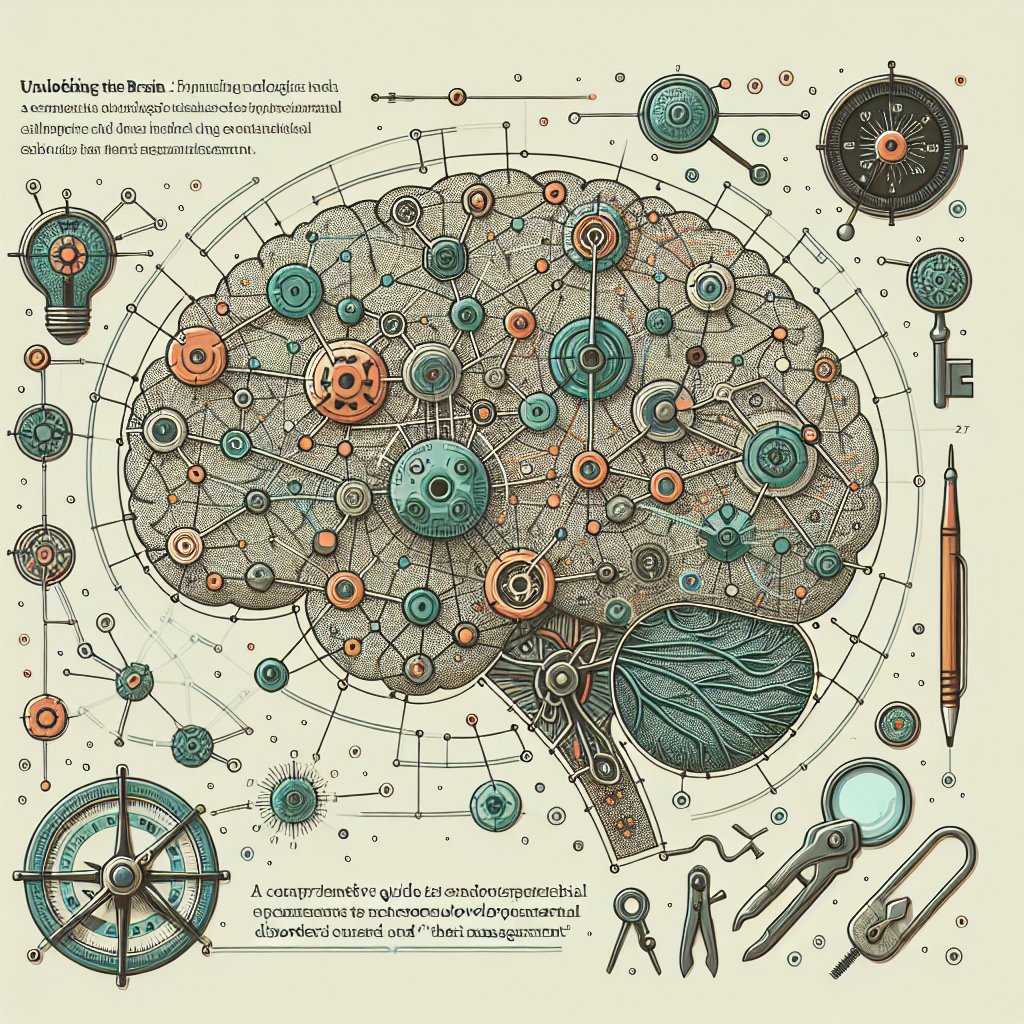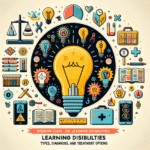
Unlocking the Brain: The Ultimate Guide to Neurodevelopmental Disorders and Their Management
Introduction
Imagine a world where every child’s potential is fully realized, where developmental challenges are met with understanding and tailored support. Enter the realm of neurodevelopmental disorders—conditions that affect how the brain develops and functions but also pave the way for profound possibilities in management and treatment. Understanding these disorders is crucial, not only for those diagnosed but also for families, educators, and health professionals. This article, "Unlocking the Brain: A Comprehensive Guide to Neurodevelopmental Disorders and Their Management," aims to shed light on these complex conditions and offer insights into effective management strategies.
Explore groundbreaking research, inspiring case studies, and actionable tips as we delve into this intricate landscape, unlocking the potential of the human brain.
Understanding Neurodevelopmental Disorders
Neurodevelopmental disorders (NDDs) encompass a wide range of conditions that manifest during the developmental period—typically before a child enters elementary school. These disorders include:
- Autism Spectrum Disorder (ASD)
- Attention Deficit Hyperactivity Disorder (ADHD)
- Intellectual Disabilities
- Learning Disorders
- Communication Disorders
The Spectrum of NDDs
Each of these disorders presents unique challenges and features, ranging from issues with communication and social interaction to difficulties in learning and behavioral control. Understanding the spectrum is key to developing effective management strategies.
| Disorder | Key Characteristics | Prevalence (%) |
|---|---|---|
| Autism Spectrum Disorder | Impaired social skills, repetitive behaviors | 1.5 |
| Attention Deficit Hyperactivity Disorder | Inattention, hyperactivity, impulsivity | 9.4 |
| Intellectual Disabilities | Below-average cognitive ability, difficulty in daily functioning | 1-3 |
| Learning Disorders | Processing difficulties affecting academics | 5-15 |
| Communication Disorders | Challenges in speech, language, and social communication | 2-7 |
The Importance of Early Diagnosis
Early diagnosis of neurodevelopmental disorders is crucial. Research indicates that the sooner a child receives support, the better their long-term outcomes. Early intervention can reduce symptoms and promote healthy development.
Case Study: The Impact of Early Intervention
Consider the case of Emily, a 3-year-old diagnosed with Autism Spectrum Disorder. With early intervention services that include speech therapy and behavioral therapy, Emily demonstrated significant improvement in communication skills and social engagement. Her story illustrates the transformative power of early diagnosis highlighted in "Unlocking the Brain: A Comprehensive Guide to Neurodevelopmental Disorders and Their Management."
Management Strategies for Neurodevelopmental Disorders
1. Educational Interventions
Tailored educational programs play an important role in managing neurodevelopmental disorders. Strategies such as Individualized Education Plans (IEPs) help provide the necessary support.
Chart: Types of Educational Strategies
| Strategy | Description | Ideal For |
|---|---|---|
| Individualized Education Plan (IEP) | Customized goals based on the child’s needs | Children with specific disabilities |
| 504 Plans | Accommodations for learning without specialization | Children with other conditions |
| Specialized Tutoring | Focused academic support to strengthen skills | Children facing learning difficulties |
2. Therapeutic Approaches
Various therapeutic approaches, including Applied Behavior Analysis (ABA), Occupational Therapy (OT), and Cognitive Behavioral Therapy (CBT), offer strategies to manage symptoms effectively.
3. Family Support and Training
Parent training programs are crucial in helping families adjust to their child’s needs effectively. Support groups foster a sense of community among families facing similar challenges.
4. Medication Management
In specific cases, medications can assist in managing symptoms such as impulsivity or attention deficits. Consulting with a healthcare professional ensures safety and efficacy.
Case Study: Therapeutic Impact
John, a 10-year-old with ADHD, struggled in school. After engaging in a combination of therapy (including CBT) and medication, his focus improved significantly, and he started achieving academic success. John’s journey emphasizes how a multi-faceted approach, as described in "Unlocking the Brain: A Comprehensive Guide to Neurodevelopmental Disorders and Their Management," can yield positive outcomes.
The Role of Technology
In today’s digital age, technology plays a pivotal role in managing neurodevelopmental disorders. Assistive technologies, such as communication devices and educational applications, empower children and adolescents to learn and express themselves effectively.
| Technology Type | Application |
|---|---|
| Communication Devices | Aid in speech or language difficulties |
| Educational Apps | Reinforce learning in a fun and interactive way |
| Behavioral Tracking Tools | Help parents and educators monitor progress |
Conclusion
As we conclude our exploration in “Unlocking the Brain: A Comprehensive Guide to Neurodevelopmental Disorders and Their Management,” it’s essential to recognize that these disorders, while challenging, are not insurmountable. With early diagnosis, effective management strategies, and parental support, individuals with neurodevelopmental disorders can thrive.
Embrace the journey of understanding neurodevelopmental disorders, and take actionable steps toward unlocking potential—both in individuals and in the larger community. Together, let’s foster a world of inclusion, acceptance, and empathy.
FAQs
1. What are the most common neurodevelopmental disorders?
The most prevalent neurodevelopmental disorders include Autism Spectrum Disorder (ASD), Attention Deficit Hyperactivity Disorder (ADHD), intellectual disabilities, learning disorders, and communication disorders.
2. How can I tell if my child has a neurodevelopmental disorder?
Signs can vary, but common indicators may include difficulties in communication, social engagement, or learning. Consultation with a healthcare provider specializing in child development is recommended for proper assessment.
3. What role do genetics play in neurodevelopmental disorders?
Genetic factors can influence the likelihood of developing NDDs. Studies show links between certain genes and conditions such as autism, indicating that heredity can play a significant role.
4. Are neurodevelopmental disorders treatable?
Yes! While there may not be a cure for many neurodevelopmental disorders, effective management strategies, including therapy, individual education plans, and support systems, can lead to significant improvements.
5. How can schools better support children with neurodevelopmental disorders?
Schools can promote a supportive environment by implementing individualized education plans, employing trained staff, and fostering inclusion within the classroom.
In this article, we’ve delved into the complexities of neurodevelopmental disorders while emphasizing that understanding, early intervention, and proactive management can lead to brighter futures. With commitment and awareness, we can transform challenges into stories of success, unlocking the incredible potential within every individual.














